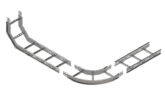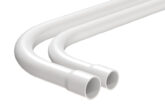
Gary Parker, Senior Technical Support Engineer at the ECA, looks at the fire safety ramifications of recent changes to the 18th Edition regulations.
The recently released 18th Edition regulations have undergone a new round of changes to keep up with the ever-evolving ways we design and install electrical installations. Key amendments to regulations on fire safety, particularly regarding escape routes, therefore need to be given careful consideration.
Some context
Building regulations since 2014 have required all circuits in new or rewired homes to comply with the requirements of BS 7671, which includes an increased use of Residual Current Devices (RCDs) and, more recently, metallic consumer units.
The previous (17th) edition was amended in 2015 to ensure all cable installations along escape routes were supported so as to prevent premature collapse in the event of fire in order to improve fire safety of the occupants and fire fighters.
Before this change was introduced in the 17th and expanded on in the 18th Edition to remove the term ‘escape route’ and broaden this approach to all locations, many types of wiring system were liable to fall from walls and ceilings in the early stages of a fire, leaving cables hanging. These cables have become entangled around the fire fighters’ breathing apparatus and/or uniform leaving them trapped and running out of air. This directly caused the deaths of eight fire fighters in the UK between 2005 and 2010, so these tragic events helped to drive a new round of changes in legislation.
Gradual improvements
BS 7671 is not retrospective, so the changes are aimed at new installations. However, the 18th Edition has highlighted some areas that were perhaps lacking clarity in the past.
When it comes to fire safety, the 18th Edition has expanded upon previous regulations and amendments, broadening the scope of installers’ and designers’ role in providing a safe installation with consideration to fire engineering.
Existing installations that have been installed in accordance with earlier editions of the regulations may not comply with the current edition in every respect, but this doesn’t necessarily mean they’re unsafe for continued use or require upgrading.
ECA recommends that all electrotechnical operatives continue to ensure their work is up-to-date and to carry out regular inspections of electrical systems, to highlight any potential failings and areas of improvement.
FIRE SAFETY IN THE 18TH EDITION
Chapter 42 Protection against thermal effects
A new Regulation 421.1.7 has been introduced regarding the recommendation for installation of Arc Fault Detection Devices (AFDDs). Regulation 422.2.1 has been redrafted. Reference to conditions BD2, BD3 and BD4 has been deleted. A note has been added stating that cables need to satisfy the requirements of the Construction Products Regulation (CPR) in respect of their reaction to fire.
Chapter 52 Selection and erection of wiring systems
Regulation 521.11.201, which gives requirements for the methods of support of wiring systems in escape routes, has been replaced by a new Regulation 521.10.202, which requires cables to be adequately supported against their premature collapse in the event of a fire. This applies throughout the installation, not just in escape routes and is relevant to all cable types, not just power.
There are a range of other changes within the 18th Edition. More information on these can be found at: www.eca.co.uk/Project18








